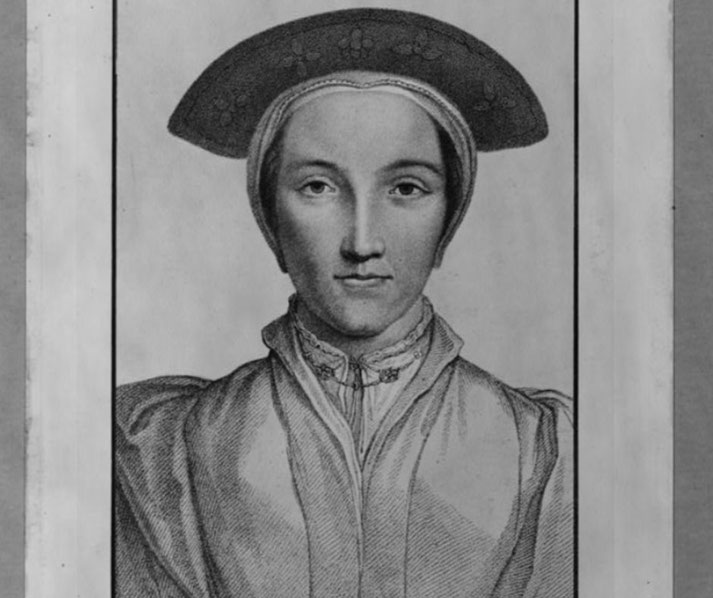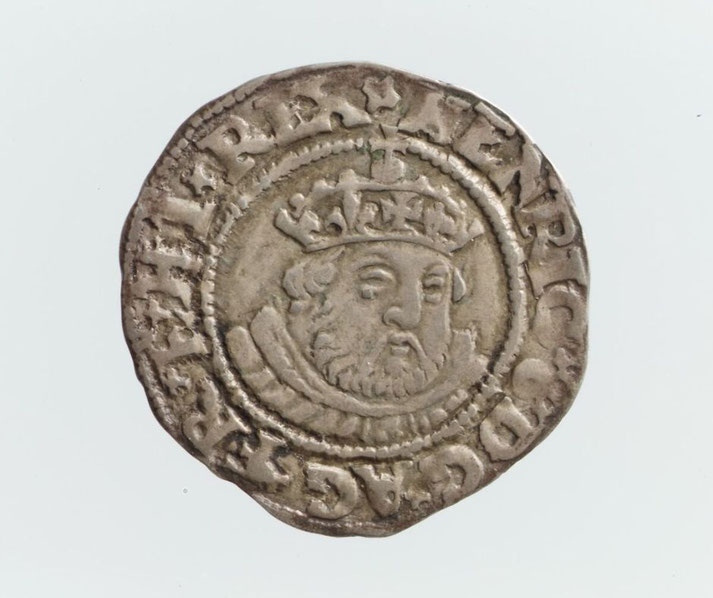The heartbreaking life of Anne of Cleves, Henry VIII's "ugly wife"

In the cruel world of Tudor England, where royal marriages were pawns in a murderous game of thrones, Anne of Cleves is often overshadowed by her infamous husband, Henry VIII.
Anne's story is frequently reduced to an embarrassing footnote – a queen who was famously 'not as advertised'. Yet, her life in the royal court and beyond was filled with quiet resilience and dignity, challenging the overly simplistic narrative often ascribed to her.
So, how did a young woman from Cleves find herself at the heart of English politics?
What was the true nature of her relationship with Henry VIII?
And in the aftermath of a marriage that lasted mere months, how did Anne of Cleves navigate the treacherous waters of Tudor politics to carve out a life of her own?
Anne's life before Henry VIII
Anne of Cleves was born on September 22, 1515, in the Duchy of Cleves, part of modern-day Germany.
She was the second daughter of John III, Duke of Cleves, and Maria of Jülich-Berg.
Raised in a ducal family known for its political significance in the region, Anne grew up in an atmosphere where dynastic politics played a crucial role.
Her early life was relatively uneventful, marked by the typical upbringing of a noblewoman in the 16th century, which focused on domestic skills and piety rather than on the intellectual or political education often afforded to princes.
Anne's homeland, the Duchy of Cleves, was strategically significant. It was located in the lower Rhineland, an area that was a religious and political crossroads of Europe.
The Protestant Reformation was taking root in many German states, influencing the religious and political landscape of the region.
Though there is little detailed documentation about Anne's personal religious beliefs, the environment in which she was raised was undoubtedly affected by these shifting religious tides.
Anne's life was largely influenced by her brother's ascent to power. In 1521, upon the death of their father, her brother William became the Duke of Cleves.
This transition brought an increased focus on forging strategic alliances through marriage, a common practice among European nobility.
Anne's sister, Sybille, was married to John Frederick, Elector of Saxony, a key figure in the Protestant movement, hinting at the family's leanings and the alliances they valued.
The political landscape of Europe during this period was dominated by shifting alliances and the constant threat of conflict.
The Holy Roman Empire, under Charles V, was a looming presence, and the various German states were often in a delicate balancing act between asserting their independence and navigating the overarching power of the Empire.
In this volatile environment, marriage was a tool of diplomacy, and Anne, like many noblewomen of her time, was destined to be part of these dynastic calculations.

The marriage negotiations with Henry VIII
The marriage negotiations between Anne of Cleves and Henry VIII began in earnest in 1539.
Following his excommunication by the Pope and the establishment of the Church of England, Henry VIII found himself increasingly isolated from the major Catholic powers of Europe.
It was in this context that Thomas Cromwell, Henry's chief minister and an advocate of the Protestant Reformation, suggested an alliance with the Protestant-leaning Duchy of Cleves.
The Duke of Cleves, eager to secure a powerful ally in England, was receptive to the proposal.
Negotiations were facilitated by the fact that Cleves, situated in the Holy Roman Empire, was strategically important in the power play between France, the Empire, and England.
An alliance with Cleves offered Henry both a potential military ally and a symbolic partnership with Protestant states.
One of the key events in these negotiations was the commissioning of Anne's portrait by the renowned artist Hans Holbein the Younger in 1539.
Henry, known for his particular interest in the appearance of his brides, requested a portrait to ensure that Anne was to his liking.
Holbein, known for his skill and accuracy, painted Anne in a manner that seemed to have satisfied the king, as the negotiations proceeded thereafter with greater urgency.
The marriage treaty was finalized in October 1539. It included terms regarding Anne's dowry, her status in England, and the mutual obligations between Henry and the Duke of Cleves.
Henry, now in his late 40s and conscious of his legacy, was keen to secure a new queen after the death of Jane Seymour.
Anne, on the other hand, was stepping into a role that had become increasingly perilous, given Henry's history with his previous wives.

The cruel events when Henry first met Anne
Anne of Cleves' marriage to Henry VIII commenced on January 6, 1540, a union that began with anticipation but quickly turned into one of the most infamous mismatches in royal history.
Upon meeting Anne for the first time at Rochester just days before their wedding, Henry was immediately disappointed.
Contrary to the impression he had formed from Hans Holbein's flattering portrait, Henry did not find Anne physically attractive, a sentiment he did not hesitate to express to his courtiers.
Regardless of this initial disappointment, the wedding proceeded at the Palace of Placentia in Greenwich, marked by the customary grandeur of a royal marriage.
The marriage, however, was troubled from the outset. Henry's lack of attraction to Anne, coupled with his notoriously fickle temperament, cast a shadow over their union.
The king, already a difficult and demanding husband, found little in common with his new queen.
Anne, for her part, was in a challenging position. She was a stranger in a foreign land, with limited knowledge of English customs and language, and now married to a king whose reputation for discarding his wives was well-known.
By the time Henry married Anne, the religious and political landscape of Europe was changing, and the anticipated alliance with the Duchy of Cleves was losing its strategic value.
The Protestant Reformation, initially a reason for England to seek an alliance with Cleves, was becoming increasingly divisive, and Henry's own religious policies were fluctuating.
These pressures culminated in the annulment of their marriage on July 9, 1540, just six months after their wedding.
The annulment was granted on the grounds of non-consummation, a claim that both Henry and Anne agreed upon.
Henry's haste to end the marriage was also influenced by his growing interest in Catherine Howard, a young lady-in-waiting at the court, who would become his fifth wife.
Anne's life in England after the annulment
After the annulment of her marriage to Henry VIII in 1540, Anne of Cleves carved out a unique position for herself in English society, an unusual feat for a former queen.
Unlike Henry's previous wives, Anne managed to remain in England and maintain a cordial relationship with the king.
She was granted a generous settlement, including a substantial annual income and several estates.
Among these were Richmond Palace and Hever Castle, the latter being particularly symbolic as the childhood home of Anne Boleyn.
She established herself as a member of the English nobility, adopting the customs and language of her new home.
Anne was often invited to court and participated in various social and ceremonial occasions.
Her relationship with Henry remained amicable; she was respected and referred to as the king's "beloved sister," a term that signified her esteemed status.
She navigated the complexities of the Tudor court, a place where her presence could have been a source of contention, with grace and diplomacy.
Unlike Henry's other wives, Anne managed to avoid the political and religious intrigue that often surrounded the court.
She lived a relatively peaceful life, focusing on managing her estates and enjoying the freedoms that her unique position afforded her.
Outliving Henry, and life under his successors
Anne mostly stayed away from the political intrigues of the court. She focused on her personal interests and maintained a peaceful life.
However, she occasionally visited the court and was present at significant events, such as the coronation of Mary I in 1553.
These appearances were a reminder of her enduring status and the respect she commanded within the royal circle.
Her relationship with Henry's children, especially Elizabeth I, was reportedly cordial.
This relationship was significant as it maintained her connection to the royal family and the court.
Anne of Cleves lived through the reigns of Henry's children – Edward VI, Mary I, and the early years of Elizabeth I's reign.
Her survival and continued presence in England during these tumultuous times were remarkable, considering the rapid changes in religious and political landscapes during these reigns.
Anne's health began to decline in early 1557. She lived long enough to see the beginning of Elizabeth I's reign, which marked a significant turn in England's religious and political history.
Anne of Cleves passed away on July 16, 1557, at Chelsea Old Manor, her final residence. She was 41 years old.
Her death marked the end of a life that had seen her journey from a German duchy to the heights of the English court and then to a dignified life as a respected noblewoman.
Anne was buried in Westminster Abbey, an honor that reflected her status and the respect she garnered in her lifetime.
Her tomb in the Abbey is relatively modest, especially when compared to the grand tombs of other monarchs and consorts.
What do you need help with?
Download ready-to-use digital learning resources
Copyright © History Skills 2014-2025.
Contact via email
With the exception of links to external sites, some historical sources and extracts from specific publications, all content on this website is copyrighted by History Skills. This content may not be copied, republished or redistributed without written permission from the website creator. Please use the Contact page to obtain relevant permission.





